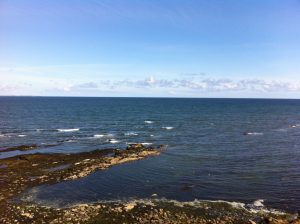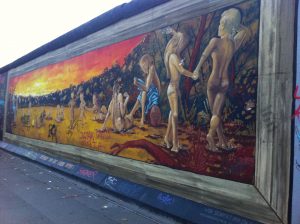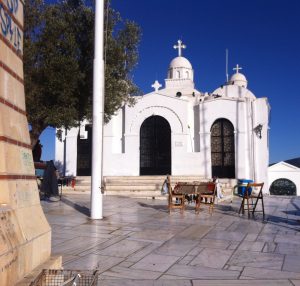Reading Log Week 5: Where Did Acadia Come From?
CBC, “Acadian Facts,” The Acadians. http://www.cbc.ca/acadian/acadian_facts.html (2016).
Naomi E. S. Griffiths, “Acadian Identity: The Creation and Re-creation of Community,” Dalhousie Review 73:3 (Fall 1993): 325-349.
In this weeks readings from CBC and Naomi E. S. Griffiths, we are presented with two sources that have become pivotal to retrieving information: the news[1] and an essay[2]. While reading both articles I was intrigued by Griffiths story-like approach to explain Acadia, and saw it is a better, more reliable representation of the people’s life over the CBC websites information.
Griffith’s first person point of view made the information easier to read; although it was longer, it gave her room to go in depth with reasoning and made the article flow. Her main argument was that “community is created, not inherited,”[3] and from this explains how the French and English built the land after migrating. Her personal research contradicts her main argument though, she explains her plan to explain Acadia’s “distinctiveness in some encapsulation by the Acadians as a French national spirit,”[4] but contradicts this when she states how she plans to explain the Acadian’s distinctiveness and not-inherited community.
CBC also states that the Acadian’s history and nationality were different from French Canadians by using the motto “L’union fait lad force”[5] (strength through unity). Griffiths and CBC both realize that Acadia was built by migrating immigrants, but Griffiths believes Champlain and other French founded the land; whereas CBC states the land was inhabited by Native tribes and founded by Giavanni de Verazzano. The CBC article is very dry and to the point with it’s information, it does not explain why the Europeans were migrating; whereas Griffiths goes into depth explaining why the Europeans migrated and what they were hoping to achieve.[6] It is clear that both authors understood the sense of unity by Acadian people, although it’s hard to believe their community was built off purely original morals because a majority of the people coming to inherit land were descendants of France and England.
CBC has no sources on their website making the reliability of the information hard to determine. In society we have accustomed ourselves to accepting the news as a reliable source, and rarely question the information we receive– so how do we determine the reliability of history that is presented through the news if there are no sources? Griffith’s, although a written essay, has many scholarly and reliable sources.The written essay by Griffiths is more reliable than the news article because she presents actual sources and explains the history of Acadia in depth and with reason.
[1] CBC, “Acadian Facts,” The Acadians. http://www.cbc.ca/acadian/acadian_facts.html (2016).
[2] Naomi E. S. Griffiths, “Acadian Identity: The Creation and Re-creation of Community,” Dalhousie Review 73:3 (Fall 1993): 325-349.
[3] Griffiths, “Acadian Identity,” Dalhousie Review 73:3 (Fall 1993): 329.
[4] Griffiths, “Acadian Identity,” Dalhousie Review 73:3 (Fall 1993): 329.
[5] CBC, “Acadian Facts,” The Acadians. http://www.cbc.ca/acadian/acadian_facts.html (2016).
[6] Griffiths, “Acadian Identity,” Dalhousie Review 73:3 (Fall 1993): 831.



